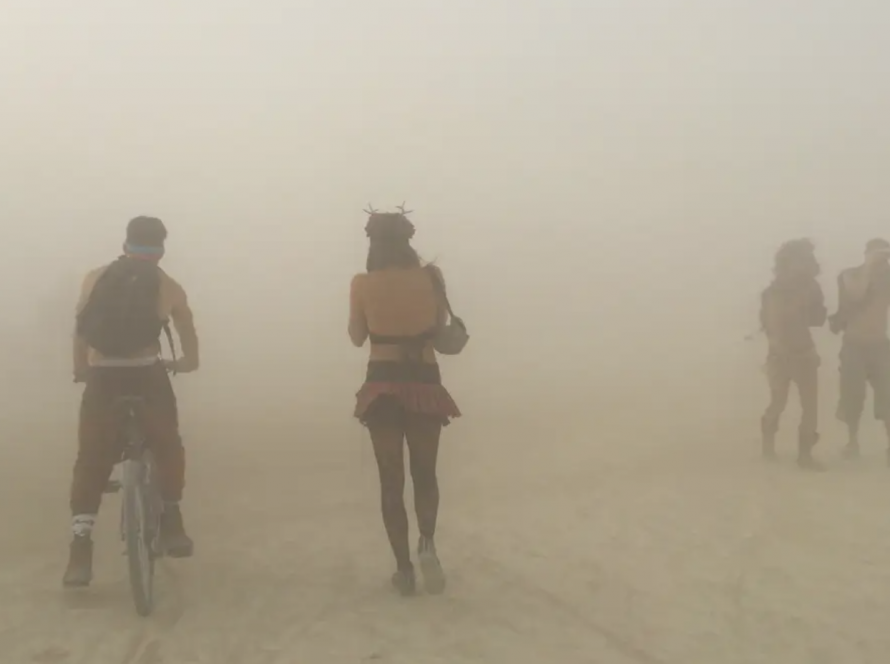I love this time of year.
I love watching the Earth — and all her pieces — wake up, emerge. I love seeing that which was dead, transformed to become something anew.
A couple years back, interestingly — or oddly, depending on your perspective — I went on a binge collecting dry, raked leaves. I believe it was the fall of 2008. I had a favorite leaf I scoured for: the small, PITA leaves of the locust trees planted with abandon in the early ’70s in my hometown, Columbia. I like these leaves because they’re already shredded, in a sense. They’re little and more easily composted or used as a mulch in flower beds and around bushes. I’d go out in the neighborhood, with the now-returned rolling recycling bin and a rake in hand, looking for the locust trees. The little leaves would be in mounds in the street, dry, easy to collect and plentiful.
When I ran out of that option in my easily walkable vicinity, I turned to leaf-bag snatching. I’d drive around in nearby neighborhoods the night before the yard-waste pickup up, and I’d scavenge. I’d look for bags of leaves that were dry and mostly twig-free. If the leaves had a mix of grass clippings, all the better. (I needed green material and vegetable matter to speed decomposition.) I borrowed a neighbor’s leaf mulcher (side note: if I were God, I’d mandate each SFH have one of these and have to use it!) and then I mulched, mulched, mulched the leaves. I spread them on every bit of bare soil around shrubs, perennials and flower gardens and, of course, in the vegetable garden. And when those options were filled to the hilt with mulched leaves, I turned to the fairly large deck off the rec room. It was high enough off the ground to provide crawl space, but low enough that mostly what was below the deck was hidden from view. Bag after bag of snatched leaves went under there. I pushed the leaves as deep and far back as I could. I brought in more. And more still. I dug the earth from under the deck, scooped it and threw it on the leaves to weight them down and bring some Earth bacteria and little critters into the mix, to accelerate where I could their decomposition.
I was, admittedly, obsessed.
I had an intense feeling that the concept of “being green” and “sustainable” and “eco” and all that jazz was nothing — meaningless — if I wasn’t doing it MY OWN environment. I felt a deep and undeniable need to create soil. To enrich the Earth. To fortify the content of the ground in and around the home. I needed to know that regardless of what was happening across the street, or down the road, or uptown or in Namibia, for that matter, that I would do what I could to make my soil rich. And that I would do so as much as possible inside the realm of the ecosystem and opportunities in my range.
Then spring and summer of the next year came. The mulched leaves were remarkably transformed. The full leaves needed to be, for the most part moved. A portion could be dug under and into the soil, but most went under the deck, added to the now-reduced volume that I’d piled in there in the fall. With summer came grass clippings. I gathered some of those, a bit wary and not too zealous, as I assumed many of my neighbors used weed killers and other chemicals that would affect the worms, critters and bacteria working so diligently to transform what once-was-dead into that which could provide new life. My secret weapon was the large plastic bags filled with vegetable scraps from a grocery store. I’d pick these up, here and there, and throw them under the deck and into our compost pile.
My obsession had sequence. It had logic and a plan.
The rains. The heat. The seasons. They came and they went. Now, here I am, on Easter Sunday, looking out at a garden so ready for new life. The compost pile I dug out on Good Friday. The dark, thick, rich soil, so heavy and ready to bring its capacity and value to the garden. The worms, hundreds if not thousands of them, ready to move into and about the garden to bring their ability to make even richer the new soil they’ll call home.* The many pounds of rich soil I’ve harvested from under the deck, used as amendments, topping and volume to bring new life to the flowers, shrubs and, even, grass.
Hour for hour, everything I did was — if I was measuring from some outside view of looking at “effectiveness” and “ROI” — would be an utter waste of time. Foolish. Ridiculous. But I didn’t make soil to have soil. Soil can be bought. It can be delivered by a landscaper or big-box home-improvement store. No, I made soil with purpose. To transform that which was waste into that which had value. To live inside an ecosystem and maximize the uses and resources there. To make the soil and worms and plants and bacteria on this little bit of land where I live, more alive, touched, loved, enriched, called forth — and supported — to be more, to be its best. And for that enrichment to then fuel me and those I love, in the vegetables and fruits I’ll eat from the garden. When I walk barefoot on the grass, the soil and bacteria and little critters that live in the same zone I call home will be touched, nourished and supported by my work, my attention and my care.
And this dirt, toil and labor — this is my experience of the holy season so many religions share. This is my experience of resurrection, my experience of rising up from the dead.
Happy Easter, beautiful people. Rock on.
** Update: I’ve since learned that the thousand of little red worms are not baby worms ready to make their home in the garden; rather, they are worms specific to the composting process. As long as you still see these small little red worms in your compost, it still needs more time to transform before pulling it out of your bins to spread about in your garden.





